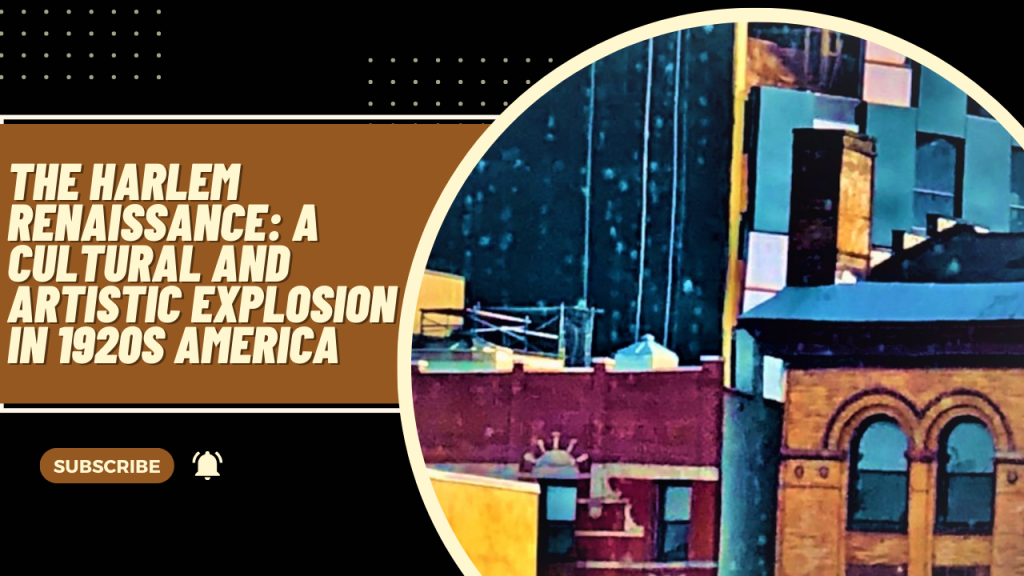
The 1920s in America witnessed a remarkable cultural and artistic phenomenon known as the Harlem Renaissance. This period marked the flourishing of African American literature, music, art, and intellectual thought, primarily centered in the Harlem neighborhood of New York City. The Harlem Renaissance, also called the “New Negro Movement,” celebrated the rich cultural heritage of African Americans, challenging racial stereotypes and laying the foundation for future social and artistic movements.
I. Historical Context:
To understand the Harlem Renaissance, one must first consider the socio-political climate of the 1920s. The aftermath of World War I, coupled with the migration of African Americans from the rural South to urban centers like Harlem, created a fertile ground for cultural expression. The Great Migration brought together diverse voices, fostering a sense of solidarity and a shared desire for self-determination.
II. Literature and the Written Word:
A. Langston Hughes – The Voice of a Generation: One of the most iconic figures of the Harlem Renaissance, Langston Hughes, used his poetry to capture the essence of African American life. His poem “The Negro Speaks of Rivers” explores the deep-rooted connection between African Americans and their heritage, exemplifying the pride and resilience of the community.
B. Zora Neale Hurston – Folklore and Identity: Zora Neale Hurston, a prominent anthropologist and writer, contributed to the movement by collecting and preserving African American folklore. Her novel “Their Eyes Were Watching God” delves into the complexities of identity, love, and independence within the context of African American experience.
III. Visual Arts:
A. Aaron Douglas – African Aesthetics in Art: The visual arts played a crucial role in the Harlem Renaissance, with artists like Aaron Douglas incorporating African aesthetics into their works. Douglas’s murals and illustrations, characterized by bold geometric shapes and vibrant colors, reflected a pride in African heritage and a commitment to breaking away from Western artistic conventions.
IV. Music and Jazz:
A. Duke Ellington – Jazz as Cultural Expression: The Harlem Renaissance was also a period of musical innovation, with jazz emerging as a powerful medium of cultural expression. Duke Ellington, a renowned jazz composer and bandleader, created music that blended traditional African American rhythms with sophisticated arrangements. His composition “Take the ‘A’ Train” became an anthem for the era.
V. Intellectual Thought:
A. W.E.B. Du Bois – Advancing African American Scholarship: Intellectuals such as W.E.B. Du Bois played a pivotal role in shaping the ideological underpinnings of the Harlem Renaissance. Du Bois’s essays and editorship of The Crisis magazine provided a platform for intellectual discourse, promoting the idea of the “Talented Tenth” – a group of educated African Americans who would lead the race to equality.
The Harlem Renaissance of the 1920s was a transformative period that celebrated the richness of African American culture and challenged societal norms. Through literature, visual arts, music, and intellectual thought, the movement left an indelible mark on American society, laying the groundwork for future generations of artists and activists. The cultural and artistic explosion in Harlem during this period not only empowered the African American community but also contributed significantly to the broader narrative of American history. The Harlem Renaissance remains a testament to the power of artistic expression in fostering social change and shaping a more inclusive future.